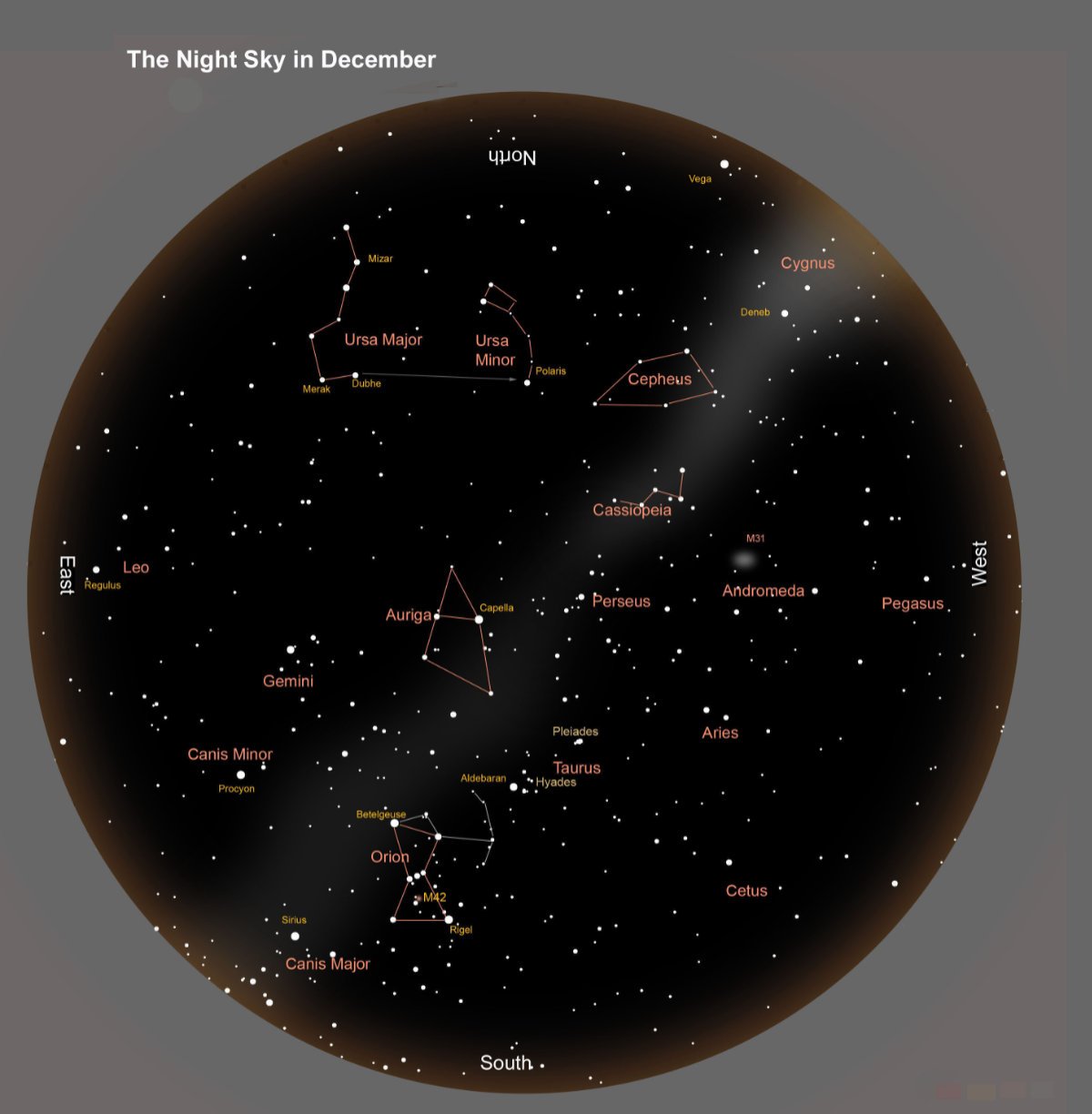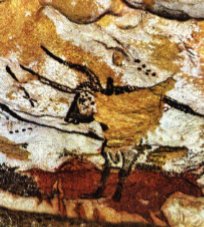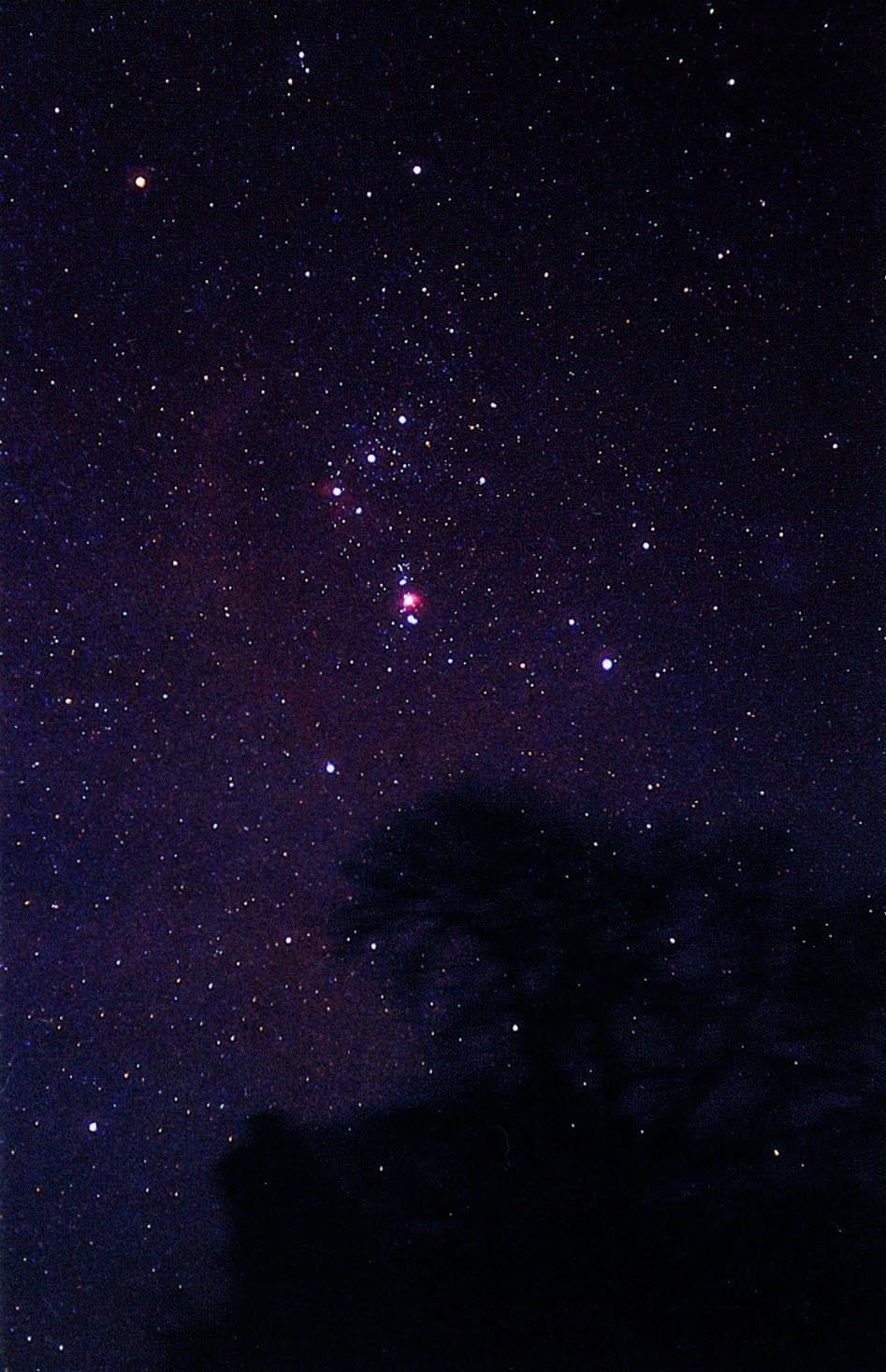
Arching across the winter night sky from horizon to horizon is the silvery stream of the Milky Way, our galaxy of possibly half a trillion stars, the second largest of a family of about fifty galaxies that form the so-called Local Group. The Milky Way flows through ancient constellations: Canis Major, the great dog; Orion, the mighty hunter; Auriga, the charioteer; Cassiopeia, the queen of Ethiopia; and Cygnus, the celestial swan.
Who created the constellation figures that adorn old charts of the night sky? Some say that the first stargazers to weave the starry points of light into those fabled celestial animals, deities and heroes may have been the ancient Egyptians, the Romans or the Babylonians, but no one knows for certain …
In fact, some of these creations go back much further in time. Around 17,000 years ago, long before those civilizations arose, an artist, balancing on a crude platform or ladder in the semi-darkness of a cave in south-western France, painted an image of haunting beauty high up on a wall. This Bull of Lascaux is one of four splendid aurochs bulls and nearly two thousand other cave paintings that, abandoned in darkness, waited for millennia to be discovered.

In 1940, Marcel Ravidat, a teenager searching for his lost dog, penetrated the cave system and came upon the murals. Intriguingly, the ancient artist – arguably the first ever amateur astronomer – had added groups of charcoal dots around the spirited bull. These match the principal stars of the area of the night sky we call Taurus, the celestial bull: a crowd of dots above its back represent the star cluster of the Pleiades or Seven Sisters; the dots in the bull’s head show the Hyades cluster, with the bright star, Aldebaran, its glittering eye in the sky.
The Lascaux Bull is bearing down upon a line of four dots, placed to represent the Belt of Orion, with an extra star that may represent the ‘Dog Star’, Sirius, the brightest gem of the night sky, and towards which the belt points. More wonderful still is a charcoal smudge beneath the belt, perfectly positioned to represent the faint patch of light – more than 1,300 light years away – that is the Orion nebula, a vast gas cloud, and birthplace of countless stars.The photo shows Orion in a pristine night sky over mid-Dorset.

So brave the seasonal chill and look for other attractions of the winter night sky: the celestial twins, Castor and Pollux, in Gemini; blue-white Procyon, one of the sun’s close neighbours at a distance of 11 light years; Capella, the yellow-hued ‘Goat Star’, high in the mid-winter sky; and M31, the Andromeda galaxy, a faint oval blur of light, visible without optical aid from sites without light pollution. The Andromeda galaxy’s light has been travelling towards us for nearly two and a half million years – fossil light, nearly two thousand times older than that which entered the eye of the Palaeolithic artist who went on to depict the bull of the sky.




